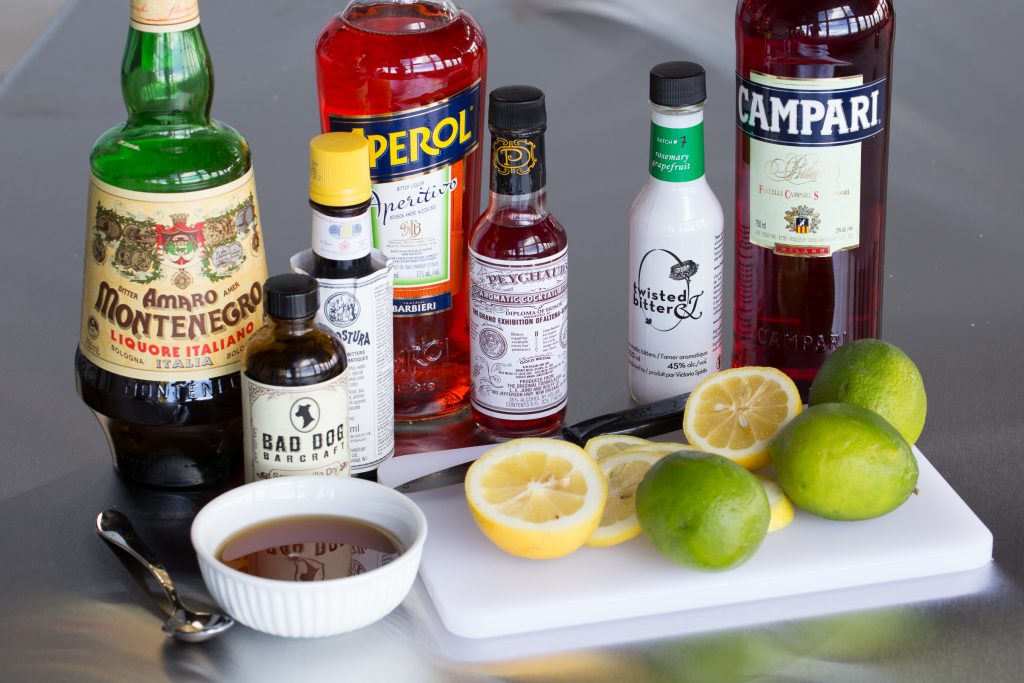In recent years, the craft cocktail movement has taken the culinary world by storm. Bartenders and mixologists everywhere are pushing the boundaries of traditional mixology to create innovative and unique drinks that cater to discerning palates. From meat-flavored concoctions to unusual infusions, the possibilities seem endless. Yet, amidst this explosion of creativity, Food Network super-chef Bobby Flay has expressed concerns about one specific aspect of this trend: the sweetness of craft cocktails.
The Craft Cocktail Movement
Evolution of Cocktails
Classic cocktails like the martini, negroni, and old-fashioned have been staples in bars for decades. However, the rise of craft cocktails has introduced a new level of sophistication and experimentation. Modern bartenders are not just mixing drinks; they are curating experiences, often drawing inspiration from culinary techniques to enhance flavors and presentation.
Defining Craft Cocktails
Craft cocktails are characterized by their use of high-quality, often artisanal ingredients, and meticulous preparation methods. These drinks are not just about alcohol; they are about balance, flavor, and presentation. Bartenders may use house-made syrups, fresh herbs, and exotic spices to create drinks that are as visually stunning as they are delicious.
Bobby Flay’s Perspective
Praise for the Movement
Bobby Flay, a renowned chef known for his expertise in Southwestern cuisine and grilling, is no stranger to the evolving trends in the food and beverage industry. He appreciates the craft cocktail movement for encouraging bartenders and consumers to think more critically about the ingredients used in drinks. In an interview with Bon Appétit, Flay highlighted that the cocktail explosion has made people more conscious of what goes into their drinks, fostering a greater appreciation for quality and craftsmanship.
The Issue of Sweetness
Despite his admiration for the creativity and ingenuity of modern mixologists, Flay has a notable critique: many craft cocktails are too sweet. Flay argues that excessive sweetness can overwhelm the palate, making a drink cloying and one-dimensional. He believes that a well-crafted cocktail should be balanced, much like a well-made vinaigrette, where the sweetness is tempered by acidity, bitterness, and other flavor elements.
Understanding Cocktail Balance

Crafting balanced cocktails involves understanding and harmonizing the fundamental elements that contribute to the overall flavor profile of the drink. Here’s a deeper dive into achieving this balance:
- Understanding the Four Basic Elements:
- Spirits: The base of any cocktail, providing the primary flavor and alcoholic content. Examples include gin, whiskey, rum, vodka, etc. Each spirit has its own unique characteristics that influence the final taste of the cocktail.
- Sugar: Adds sweetness to balance the potency and bitterness of the spirits. Sugar can come in various forms such as simple syrup, granulated sugar, honey, agave nectar, or even sweet liqueurs.
- Water: Often added through ice (both in the shaking/stirring process and when serving over ice) or other liquid components, it dilutes the drink to the right strength, helping to meld the flavors together.
- Bitters: These concentrated flavor extracts add complexity and balance by countering sweetness and enhancing the overall profile of the drink. Common examples include Angostura bitters and orange bitters.
- Balancing Sweet and Bitter:
- Achieving the right balance involves careful measurement and adjustment. Too much sweetness can overpower the drink, while excessive bitterness can make it unpleasant.
- Tasting and adjusting throughout the mixing process is crucial. For example, if a drink is too sweet, adding a few drops of bitters can bring it back into balance. Conversely, if it’s too bitter, a little more sugar can soften the harshness.
- Ingredient Quality and Interaction:
- High-quality ingredients yield better results. Fresh juices, good spirits, and quality syrups contribute significantly to the taste.
- Understanding how ingredients interact is key. Citrus juices add acidity, balancing sweetness and enhancing brightness. Herbs and spices add aromatic complexity.
- Experimentation and Adjustment:
- Start with classic recipes and then experiment. Change one element at a time to understand its impact. For example, substituting lemon juice with grapefruit juice will change the acidity and sweetness, requiring adjustments elsewhere.
- Proportions matter. A basic sour recipe (spirit, citrus, sweetener) typically uses a 2:1:1 ratio (2 parts spirit, 1 part citrus, 1 part sweetener), but this can be adjusted to taste.
- Practical Tips for Achieving Balance:
- Taste as You Go: Use straws or pipettes to sample the drink during preparation. This helps in making immediate adjustments.
- Note Ingredients’ Characteristics: Some fruits are sweeter or more acidic than others, and syrups can vary in sweetness. Adjust quantities accordingly.
- Mixing Techniques: Shaking or stirring affects dilution and texture. Shaking with ice chills and aerates the drink, while stirring provides a smoother, less diluted result.
By understanding these principles and continuously experimenting, one can master the art of crafting balanced cocktails that are both delicious and harmonious.
Bobby Flay’s Ideal Cocktail – The Negroni Sbagliato

Bobby Flay has often spoken about his favorite cocktail, the negroni sbagliato. This drink is a variation of the classic negroni, which traditionally combines gin, Campari, and sweet vermouth. The negroni sbagliato replaces the gin with prosecco, resulting in a lighter, more effervescent cocktail. The key to its success lies in its balance:
- Campari: Provides a strong, bitter flavor.
- Sweet Vermouth: Adds sweetness but with depth and complexity.
- Prosecco: Offers a refreshing, bubbly contrast without overwhelming sweetness.
Flay appreciates the negroni sbagliato for its perfect equilibrium of flavors, demonstrating how a cocktail can be complex and satisfying without being overly sweet.
Creating a well-balanced negroni sbagliato requires attention to detail and quality ingredients. Here are the steps to crafting this ideal cocktail:
Ingredients
- 1 ounce Campari
- 1 ounce sweet vermouth
- 1 ounce prosecco
- Ice
- Orange slice or twist for garnish
Instructions
- Chill the Glass: Start by chilling a rocks glass or an old-fashioned glass.
- Combine Ingredients: In a mixing glass, combine Campari and sweet vermouth.
- Add Ice: Fill the mixing glass with ice and stir gently to chill the mixture without diluting it excessively.
- Pour and Top: Strain the mixture into the chilled glass filled with fresh ice. Top with prosecco.
- Garnish: Garnish with an orange slice or twist to add a citrus aroma and enhance the visual appeal.
Crafting Balanced Cocktails
Tips from Experienced Mixologists
Creating a balanced cocktail requires a deep understanding of the ingredients and how they interact. Experienced mixologists often follow these guidelines:
- Understand Flavor Profiles: Knowing the characteristics of each ingredient helps in achieving balance. For example, pairing a tart ingredient with a sweet one can create harmony.
- Use Fresh Ingredients: Fresh juices, herbs, and other ingredients can significantly enhance the flavor and balance of a cocktail.
- Measure Accurately: Precision is key. Using the right proportions ensures that no single element overpowers the others.
- Taste and Adjust: Always taste your cocktail before serving. Small adjustments (a dash of bitters, a squeeze of lemon) can make a big difference.
- Experiment with Substitutions: Once comfortable with basic recipes, try substituting ingredients to create new flavor profiles while maintaining balance. For example, using limoncello instead of triple sec in a margarita can add a different kind of sweetness and complexity.
Examples of Balanced Cocktails
- Classic Margarita: Combines tequila, lime juice, and triple sec. The tartness of lime juice balances the sweetness of triple sec, with tequila providing a strong base.
- Old Fashioned: Mixes bourbon or rye whiskey with a sugar cube, bitters, and a twist of citrus. The bitters and citrus balance the sweetness, highlighting the depth of the whiskey.
- Gin and Tonic: A simple yet sophisticated drink where the bitterness of tonic water complements the botanical flavors of gin, often enhanced with a squeeze of lime.
The Role of Sweetness in Cocktails
Sweet Cocktails Done Right
Flay does not dismiss sweet cocktails outright. He acknowledges that sweetness is an essential component in many beloved drinks. However, he emphasizes that even intentionally sweet cocktails must be balanced to be enjoyable.
Examples of Balanced Sweet Cocktails
- Daiquiri: Combines rum, lime juice, and simple syrup. The lime juice’s acidity perfectly balances the sweetness, creating a refreshing and well-rounded drink.
- Mai Tai: A tiki classic with rum, lime juice, orgeat syrup, and orange liqueur. The interplay of sweet, sour, and nutty flavors makes it complex and delightful.
- Cosmopolitan: Mixes vodka, triple sec, cranberry juice, and lime juice. The tartness of cranberry and lime counterbalances the sweetness of the triple sec, resulting in a sophisticated cocktail.
The Danger of Over-Sweetening
When sweetness dominates a cocktail, it can mask the other flavors and nuances that make a drink interesting. An overly sweet cocktail can be enjoyable for a few sips but quickly becomes tiresome. Flay argues that sweetness should enhance a drink, not overwhelm it.
Critiques and Reactions from the Industry
Mixologists’ Responses
Many mixologists appreciate Flay’s critique, seeing it as a call to elevate their craft. Balancing flavors is a fundamental skill, and constructive criticism from a respected chef like Flay can inspire bartenders to refine their techniques.
The Consumer Perspective
Consumers are becoming more knowledgeable and discerning about their drinks. Flay’s comments resonate with those who seek complexity and depth in their cocktails, encouraging them to demand better-balanced beverages.
Conclusion
Bobby Flay’s critique of the sweetness in craft cocktails highlights an essential aspect of mixology: balance. While the craft cocktail movement has introduced a wealth of creativity and innovation, it is crucial to remember that the most memorable drinks are those that achieve a perfect harmony of flavors. Sweetness has its place in cocktails, but it should be one element in a symphony of tastes, not the dominating note. As the industry continues to evolve, Flay’s insights serve as a reminder that the art of cocktail-making lies in the delicate balance of its ingredients.
I’m Chen Mina, from Vol de Nuit, who has a special passion for bartending, especially mixing wine, beer, and cooktail. Here you will find content about alcoholic beverages, I will bring you knowledge that few people know about this drink.



